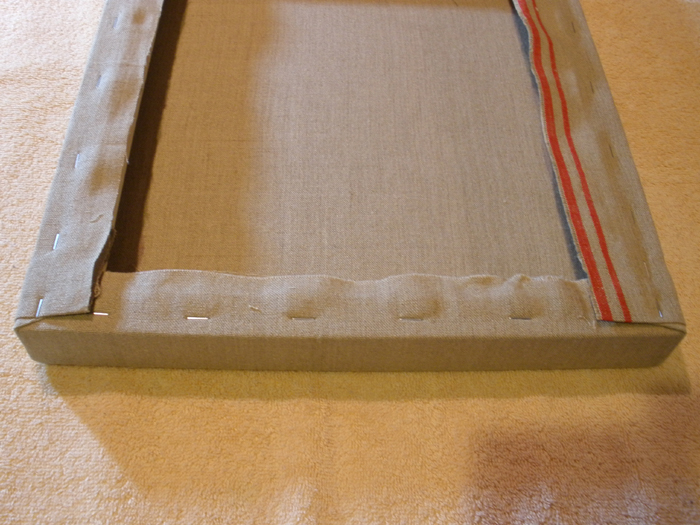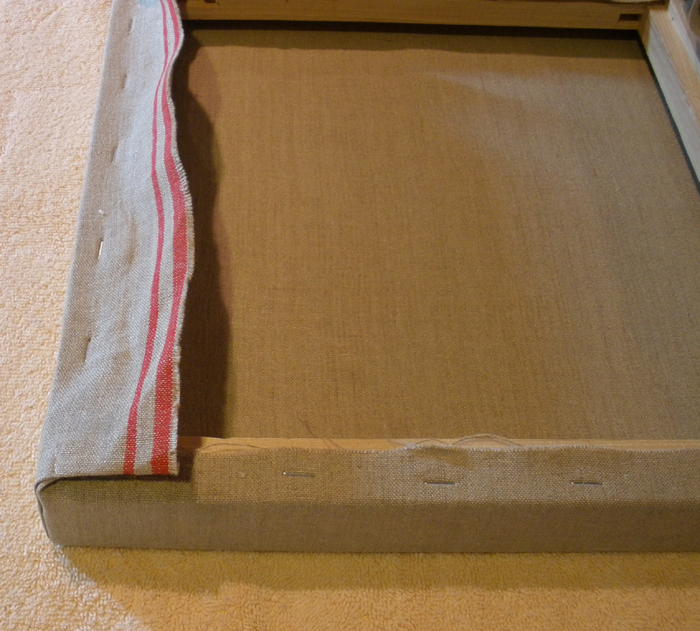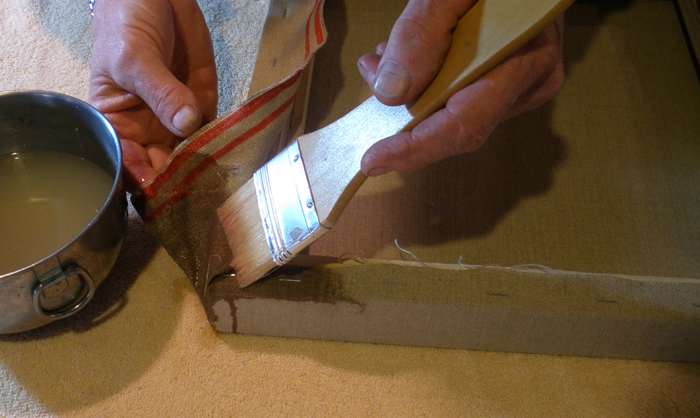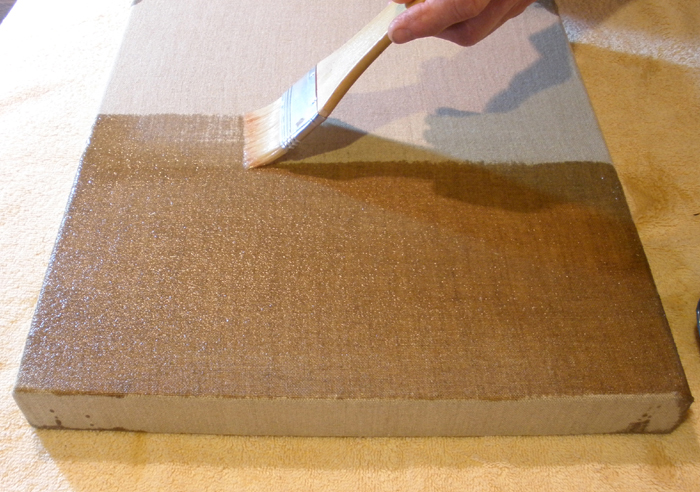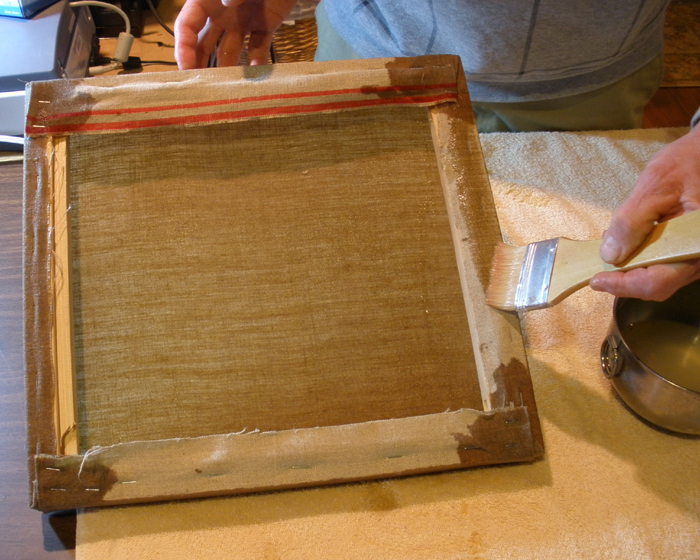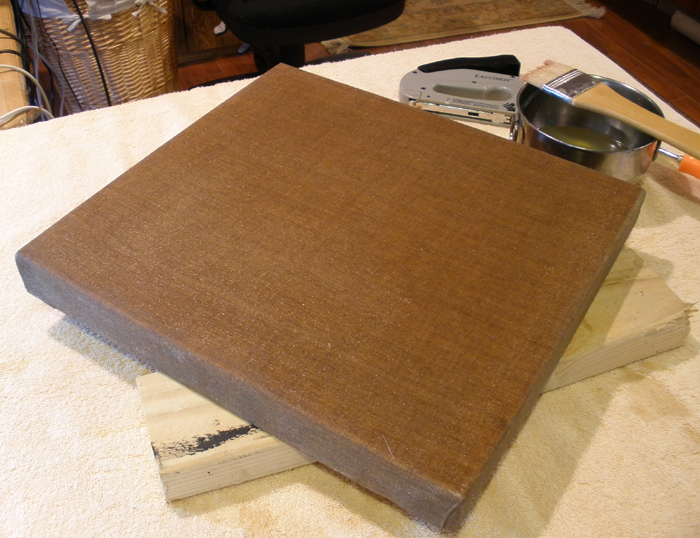Rob, at French Canvas, graciously sent me one of their stretched linen canvases to use as a blog demonstration and to use for one of my Egyptian paintings. I have used their superior products in the past, and because so many people have requested more information about priming techniques, this will be a good way to show how it is done.
You can see the professional quality of the stretching with the corners mitered very carefully. The linen is slightly loose. After the glue is applied it will become perfectly taut.
I have removed the staples at the corners temporarily for the application of the sizing. All surfaces must be completely saturated with the liquid to seal the fibers, and it is only possible to do that by lifting slightly.
Soak 3 tablespoons of the dry glue crystals in a quart of water and let sit overnight. When you are ready to begin, use a double boiler to heat the water gently and allow the crystals to dissolve. Be careful not to boil the water. Using a soft brush, apply the warm glue into the corners then move quickly around to the edges.
After finishing the corners, re-secure them with staples, and quickly move to the front. Really soak the linen so it saturates all the way through to the backside. You can see what is covered and what isn't by the dark color.
After the front is saturated, turn the canvas back over and finish the edges and sides.
After every bit of surface is covered, place the canvas up on blocks so air can flow underneath. Always lay flat until it is totally dry. This will take at least 24 hours, sometimes a little more.
Next, on to the priming

